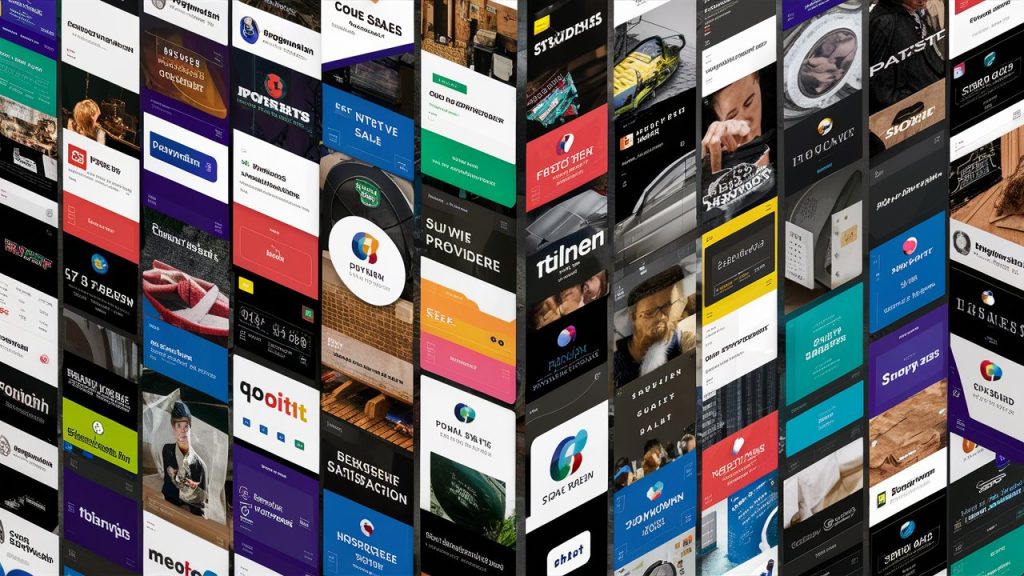Which Payment Provider to Choose for Shopify?

Choosing the right payment provider is crucial for any e-commerce business, and Shopify store owners are no exception. The payment provider you select can significantly impact your business’s profitability, customer satisfaction, and overall success. In this comprehensive guide, we’ll delve into the factors to consider when choosing a payment provider, compare the top options available, and provide actionable insights to help you make the best decision for your Shopify store. This article is contextualized with insights from Poppayai.com’s expertise in digital pay-on-delivery services, particularly relevant to markets like Nigeria.
Understanding Shopify Payment Providers
What is a Payment Provider?
A payment provider, also known as a payment gateway, is a service that processes credit card payments for e-commerce and brick-and-mortar stores. It acts as an intermediary between the customer and the merchant, ensuring secure transaction processing and funds transfer. For Shopify store owners, choosing the right payment provider is essential to ensure smooth transactions and a positive customer experience.
Importance of Selecting the Right Payment Provider
Selecting the right payment provider is vital for several reasons:
- Transaction Fees: Different providers charge varying fees, which can affect your profit margins.
- Security: A reliable payment provider offers robust security features to protect against fraud and data breaches.
- Ease of Integration: The provider should seamlessly integrate with your Shopify store without requiring extensive technical expertise.
- Customer Support: Quality customer support can help resolve issues quickly, ensuring uninterrupted service.
- Compatibility with International Payments: If you plan to sell globally, your payment provider should support multiple currencies and international transactions.
Key Factors to Consider When Choosing a Payment Provider
Transaction Fees
Transaction fees can significantly impact your bottom line. These fees typically include a percentage of the transaction amount and a fixed fee per transaction. Some providers also charge additional fees for currency conversion, chargebacks, and other services.
Types of Transaction Fees
- Percentage Fee: A percentage of the transaction amount, usually ranging from 2% to 15%.
- Fixed Fee: A small, fixed amount charged per transaction, typically ranging from $0.10 to $1.
- Additional Fees: Fees for services such as currency conversion, chargebacks, and international transactions.
How to Minimize Transaction Fees
- Negotiate with Providers: Some providers may offer lower fees for high-volume businesses.
- Choose the Right Plan: Some providers offer different plans with varying fee structures, so choose one that aligns with your business needs.
- Monitor Transactions: Regularly review your transaction fees to identify and address any discrepancies.
Security Features
Security is paramount when handling customer payments. A reliable payment provider should offer robust security features to protect against fraud and ensure data privacy.
Key Security Features to Look For
- PCI Compliance: Payment Card Industry Data Security Standard (PCI DSS) compliance ensures that the provider adheres to industry-standard security protocols.
- SSL Encryption: Secure Sockets Layer (SSL) encryption protects sensitive information during transmission.
- Fraud Detection: Advanced fraud detection and prevention tools can help identify and mitigate fraudulent transactions.
- Two-Factor Authentication: Adding an extra layer of security by requiring two forms of identification.
Ease of Integration
The payment provider should seamlessly integrate with your Shopify store, allowing you to start accepting payments quickly and efficiently.
Integration Considerations
- Compatibility: Ensure the provider is compatible with Shopify and any other tools or plugins you use.
- API Documentation: Comprehensive and clear API documentation can simplify the integration process.
- Technical Support: Access to technical support can be invaluable during the integration process.
Customer Support
Quality customer support is essential for resolving issues quickly and ensuring uninterrupted service.
Types of Customer Support
- Live Chat: Immediate assistance via live chat can help resolve issues in real time.
- Phone Support: Direct communication with support agents can be more effective for complex issues.
- Email Support: Suitable for non-urgent issues and detailed inquiries.
- Knowledge Base: Access to a comprehensive knowledge base can help you troubleshoot common issues independently.
Compatibility with International Payments
If you plan to sell globally, your payment provider should support multiple currencies and international transactions.
Considerations for International Payments
- Currency Conversion: Ensure the provider supports currency conversion and offers competitive exchange rates.
- International Fees: Be aware of any additional fees for international transactions.
- Regulatory Compliance: Ensure the provider complies with international regulations and standards.
Top Shopify Payment Providers
1. Poppayai.com Digital Payments-On-Delivery System
Overview
Poppayai.com’s digital payments-on-delivery system is a stand-alone payment gateway or marketplace where you can link your Shopify store to the marketplace for your customers to pay you on delivery. The Poppayai.com seamless integration with your Shopify store enables you to get the capital upfront to fulfil the orders that came in through your Shopify store.
Features
- Low Transaction Fees: When using Poppayai.com Payments, there are no additional transaction fees, which can save you money.
- Multi-Currency Support: Accept payments in multiple currencies to cater to international customers.
- Fraud Analysis: Built-in fraud detection tools help protect your business.
- Ease of Use: Seamless link integration with Shopify, simplifying the setup process.
- Easy Linking: Payment on Delivery Enabled
Pros and Cons
- Pros:
- Low transaction fees.
- Easy setup and integration: Create a store and add a link to your Shopify store.
- Robust security features.
- Cons:
- Limited to certain countries.
- Requires a Poppayai.com pay-on-delivery stand-alone store.
2. PayPal
Overview
PayPal is a widely recognized and trusted payment provider, offering both PayPal Express Checkout and PayPal Payments Pro for Shopify stores.
Features
- Global Reach: Available in over 200 countries and supports multiple currencies.
- Buyer Protection: PayPal offers buyer protection, enhancing customer trust.
- Easy Integration: Seamless integration with Shopify and other e-commerce platforms.
- Flexible Payment Options: Supports credit cards, debit cards, and PayPal balance.
Pros and Cons
- Pros:
- Wide acceptance and trust.
- Supports multiple payment methods.
- Strong security features.
- Cons:
- Higher transaction fees compared to some providers.
- Occasional account holds and limitations.
3. Stripe
Overview
Stripe is a popular payment provider known for its developer-friendly API and robust features.
Features
- Customizable Payment Solutions: Highly customizable API allows for tailored payment solutions.
- International Support: Supports payments in over 135 currencies.
- Advanced Security: Includes PCI compliance, SSL encryption, and fraud detection.
- Subscription Management: Ideal for businesses with recurring billing.
Pros and Cons
- Pros:
- Highly customizable.
- Supports a wide range of currencies.
- Comprehensive security features.
- Cons:
- Requires technical expertise for customization.
- Higher fees for some international transactions.
4. Square
Overview
Square is known for its simplicity and ease of use, making it a popular choice for small businesses and startups.
Features
- Integrated Hardware and Software: Offers both payment processing and POS hardware.
- Transparent Pricing: Flat-rate pricing with no hidden fees.
- Next-Day Deposits: Fast access to funds with next-day deposits.
- Omni-Channel Support: Accept payments online, in-store, and on-the-go.
Pros and Cons
- Pros:
- Easy to use and set up.
- Transparent pricing.
- Fast access to funds.
- Cons:
- Limited customization options.
- Not available in all countries.
5. Authorize.Net
Overview
Authorize.Net is a reliable and established payment provider, offering a wide range of features for e-commerce businesses.
Features
- Advanced Fraud Detection: Includes customizable fraud detection tools.
- Recurring Billing: Supports subscription-based businesses.
- Comprehensive API: Provides extensive API documentation for customization.
- 24/7 Support: Offers round-the-clock customer support.
Pros and Cons
- Pros:
- Robust fraud detection.
- Supports recurring billing.
- Comprehensive customer support.
- Cons:
- Higher fees compared to some competitors.
- Requires more setup time.
Case Studies and User Testimonials
Case Study 1: Poppayai.com Digital Payments on Delivery Success
Overview
A small online clothing store decided to switch to Poppayai.com Payments to streamline its cash handling payment processing and transcended into the digital cash handling and delivery system and increased customer average order value to 1200%.
Results
- Increased Profit Margins: Saved, leading to higher profit margins.
- Improved Customer Experience: Seamless checkout process enhanced customer satisfaction.
- Simplified Management: Dedicated payment processing simplified financial management.
Case Study 2: PayPal Integration
Overview
A medium-sized electronics retailer integrated PayPal to cater to international customers and provide additional payment options.
Results
- Expanded Customer Base: Increased international sales by 20%.
- Enhanced Trust**: PayPal’s buyer protection boosted customer trust and confidence.
- Easy Setup: Quick and easy integration with Shopify.
Case Study 3: Stripe Customization
Overview
A subscription box service chose Stripe for its customizable API and subscription management features.
Results
- Streamlined Billing: Efficiently managed recurring billing, reducing churn rates.
- Global Reach: Supported payments in multiple currencies, expanding the customer base.
- Advanced Analytics: Gained insights into customer behavior and payment trends.
Emerging Trends in Payment Solutions
1. Mobile Payments
Mobile payments are becoming increasingly popular, offering convenience and speed for customers. Payment providers like Apple Pay, Google Pay, and Samsung Pay are gaining traction.
2. Cryptocurrency Payments
Cryptocurrencies like Bitcoin and Ethereum are being adopted by some e-commerce businesses as an alternative payment method. Providers like BitPay facilitate these transactions.
3. Buy Now, Pay Later (BNPL)
BNPL services like Afterpay and Klarna allow customers to split payments into installments, increasing sales and average order value.
4. Enhanced Security Measures
As cyber threats evolve, payment providers are enhancing their security measures. Features like biometric authentication and AI-driven fraud detection are becoming standard.
5. Subscription Economy
With the rise of subscription-based businesses, payment providers are offering advanced subscription management features. This includes flexible billing cycles and automated renewals.
Addressing Common Pain Points
1. High Transaction Fees
Solution
- Negotiate with Providers: Reach out to your payment provider to negotiate lower fees, especially if you have high transaction volumes.
- Choose a Plan that Suits Your Needs: Some providers offer different pricing plans, so select one that aligns with your business model.
2. Security Concerns
Solution
- Choose PCI-Compliant Providers: Ensure your provider adheres to PCI DSS standards.
- Implement SSL Encryption: Protect sensitive information with SSL encryption.
- Use Fraud Detection Tools: Leverage advanced fraud detection tools to prevent fraudulent transactions.
3. Integration Challenges
Solution
- Use Provider Documentation: Follow the provider’s API documentation for seamless integration.
- Seek Technical Support: Utilize customer support services for assistance with integration issues.
4. Poor Customer Support
Solution
- Choose Providers with 24/7 Support: Opt for providers that offer round-the-clock support.
- Utilize Multiple Support Channels: Use live chat, phone support, and email for quicker resolution of issues.
5. Limited International Payment Options
Solution
- Select Providers with Global Reach: Choose providers that support multiple currencies and international transactions.
- Monitor Exchange Rates: Keep an eye on exchange rates to ensure competitive pricing for international customers.
Conclusion
Choosing the right payment provider for your Shopify store is a critical decision that can impact your business’s success. By considering factors such as transaction fees, security features, ease of integration, customer support, and compatibility with international payments, you can make an informed decision that meets your business needs.
In this comprehensive guide, we’ve explored the top payment providers for Shopify, analyzed their features, pros, and cons, and provided case studies and emerging trends to help you navigate the complex landscape of e-commerce payments. By addressing common pain points and leveraging best practices, you can enhance your payment processing system, improve customer satisfaction, and drive your business growth.
FAQs
1. What is the best payment provider for Shopify?
There is no one-size-fits-all answer, as the best payment provider depends on your specific business needs, transaction volume, and target market. Shopify Payments, PayPal, Stripe, Square, and Authorize.Net are all excellent options to consider.
2. How do I integrate a payment provider with my Shopify store?
Most payment providers offer detailed API documentation and customer support to help with integration. You can also use Shopify’s built-in settings to connect your payment provider.
3. Can I use multiple payment providers on my Shopify store?
Yes, you can offer multiple payment options to your customers by integrating more than one payment provider. This can improve customer satisfaction by providing flexibility in payment methods.
4. How do I minimize transaction fees?
To minimize transaction fees, negotiate with your payment provider for lower rates, choose a plan that aligns with your business needs, and monitor your transactions regularly to identify and address any discrepancies.
5. What should I do if I experience issues with my payment provider?
If you experience issues with your payment provider, reach out to their customer support for assistance. Use multiple support channels such as live chat, phone support, and email to resolve issues quickly.
By leveraging the insights and best practices from Poppayai.com’s expertise in digital pay-on-delivery services, you can ensure that your Shopify store’s payment processing is efficient, secure, and customer-friendly, ultimately leading to a successful and profitable e-commerce business.



















